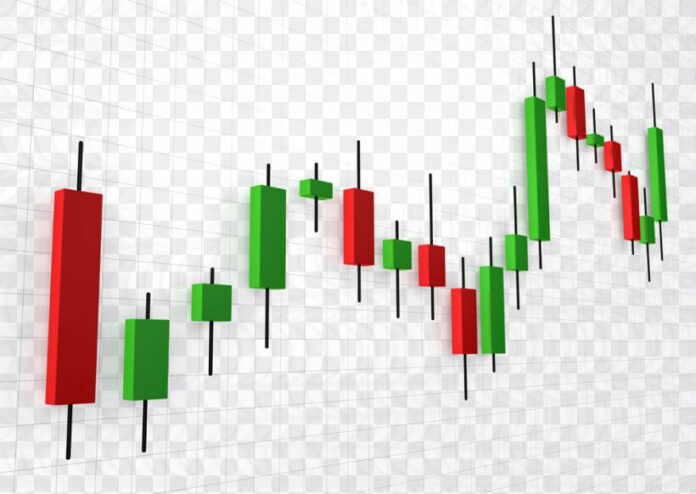A chart pattern is a graphical presentation of price movement by using a series of trend lines or curves.
Chart patterns can be described as a natural phenomenon of fluctuations in the price of a financial asset that is caused by a number of factors, including human behavior.
Chart patterns are the foundation of technical analysis.
In technical analysis, chart patterns are used to find trends in the movement of an asset’s price.
A trader armed with the knowledge required to recognize patterns, along with the skill to apply them to their decision-making process can increase their odds of anticipating where the price will move next.
The skill required to interpret the chart patterns correctly takes practice and commitment to acquire.
There are many different chart patterns that are used in technical analysis.
The most basic form of chart pattern is a trend line.
Popular chart patterns include head and shoulder formations, double and triple tops and bottoms, pennants, flags, and wedges.
Patterns can be based on seconds, minutes, hours, days, months, or even ticks and can be applied to a line, bar, candlestick charts.
Chart patterns aren’t bound by any scientific principle or physical law, their effectiveness highly depends on the number of market participants paying attention to them.
Pattern Types
There are two basic types of patterns: continuation and reversal.
Continuation Chart Patterns
Continuation patterns identify opportunities for traders to continue with the trend.
The most common continuation patterns include Triangle patterns, Flag patterns, and Pennant patterns.
Reversal Chart Patterns
The opposite of a continuation pattern is a reversal pattern. These are used to look for scenarios to trade the reversal of a trend.
Reversal patterns seek to find where trends have ended.
“The trend is your friend until it bends.” is another phrase for those looking for a reversal in a trend.
Common reversal patterns are Double Tops and Double Bottoms, Head-and-Shoulders and Inverse Head and Shoulder patterns, and Triple Top and Triple Bottoms.
Why Do Chart Patterns Work?
Because markets are fractal, chart patterns work across all time frames.
Fractals refer to a recurring pattern that occurs amid larger price movements.
Trader psychology is the main driving force of price action, so these chart patterns work across all asset classes from stocks, bonds, currencies, commodities, and cryptocurrencies.
Technical traders believe the price reflects all the fundamental information, including market sentiment and perceived fair value.
If this is true, then chart patterns should be the ultimate predictor of future market movement.
Chart patterns need to be analyzed in the context of the trend which is key to successfully trading chart patterns.
Determining the dominant trend is paramount because only then can we use chart patterns to know whether the current trend is more likely to continue or more likely to reverse.
To better understand why chart patterns work, it’s important to look at the psychology behind the price and the supply and demand forces that give these chart patterns their shapes.
Psychology behind Chart Patterns
To get a sense of the price action, you need to read the charts through a lens that shows what other market participants are thinking.
The basis of chart patterns is market psychology because these price formations reflect the buying and selling pressures in a visual format.
The supply and demand forces are the ones that shape these price patterns.
A chart can give us a complete pictorial record of all trading activity and can provide us with a framework to analyze the battle raging between the bulls and the bears.
Most importantly, chart patterns can assist us in finding out who is winning the bulls and bears battle.
Trading is all about determining who is winning this battle because this will allow you to take trades according to the market sentiment.
No matter the time frame you use to trade these chart patterns, they still work because emotion and supply and demand are universal laws.
Since orders are submitted by human beings, what gives the shape to a price chart is the buy and sell orders or the supply and demand forces.
Every chart pattern has a story that creates the current shape of the pattern.
For example, a Bull Flag shows that the bulls are not buying anymore, but they hold and defend their positions by keeping the price in a narrow range.
Flag patterns are a powerful price action because it incorporates the trend in the price structure.
A top-down approach to trading chart patterns incorporates three main steps.
- Decide on the time frame you want to trade, which should reflect the type of trader you are. The intraday charts like the 5 and 15 minutes are usually used for day trading or scalping the market. The 4-hr and the daily chart can be used for swing trading and the weekly and monthly time frame for position trading.
- Identify the dominant trend of your preferred time frame.
- Once you see the dominant trend, you can then spot chart patterns to time the market.
You need to avoid trading solely based on chart patterns without having an established framework because you’ll end up trading on pure emotion.
Context and planning are the backbones of good decisions in trading.
Chart Pattern vs. Candlestick Pattern
What’s the difference between a candlestick pattern versus a chart pattern?
| CANDLESTICK PATTERN | CHART PATTERN |
|---|---|
| A mix of one or more candlesticks gives rise to a candlestick pattern. | When the price changes as a result of psychological and fundamental aspects over a long time period, it gives rise to chart patterns. |
| Candlestick patterns appear over a short time span. | The trend direction is shown for a longer time span. |
| The trend direction is indicated for a short time span. | The change in trend direction can also be indicated by chart patterns. |
| This pattern is adapted for short-term entry & exit points. | This pattern is adapted for longer-term buy and sell signals. |
If this article seems useful to your then please click the like button below. You can also share your valuable feedback or ask questions in the below comment section. Also, subscribe to our newsletter for trading-related updates.







